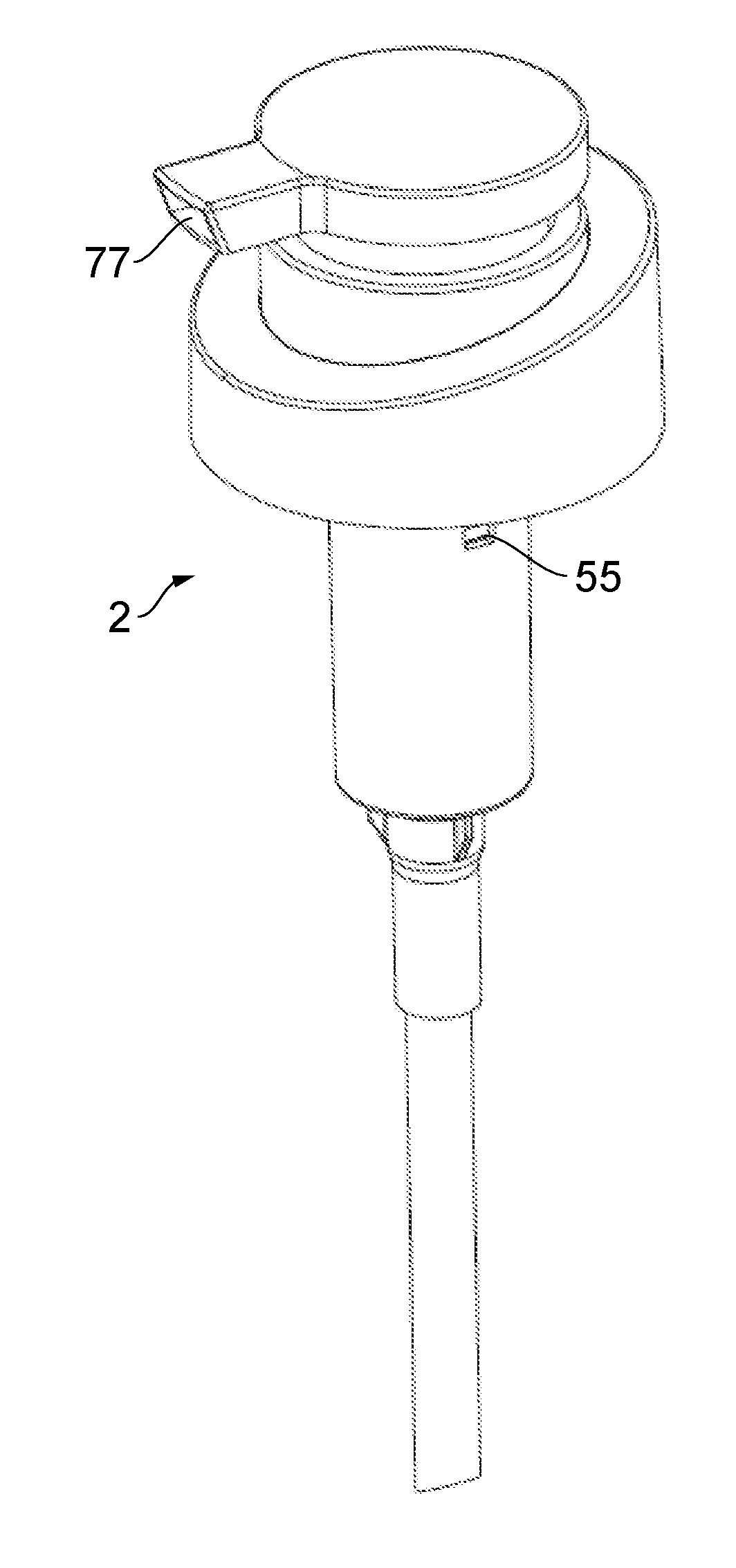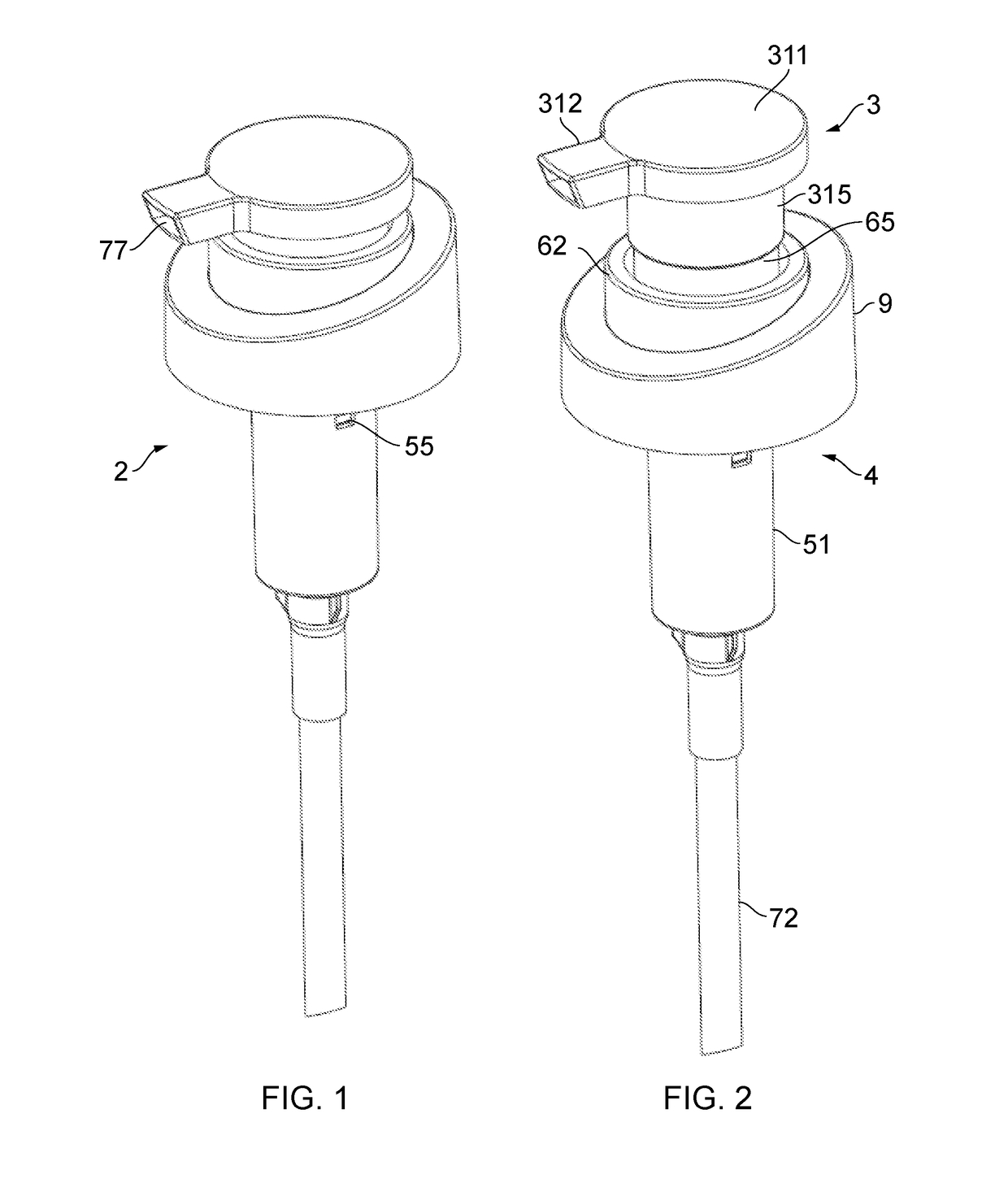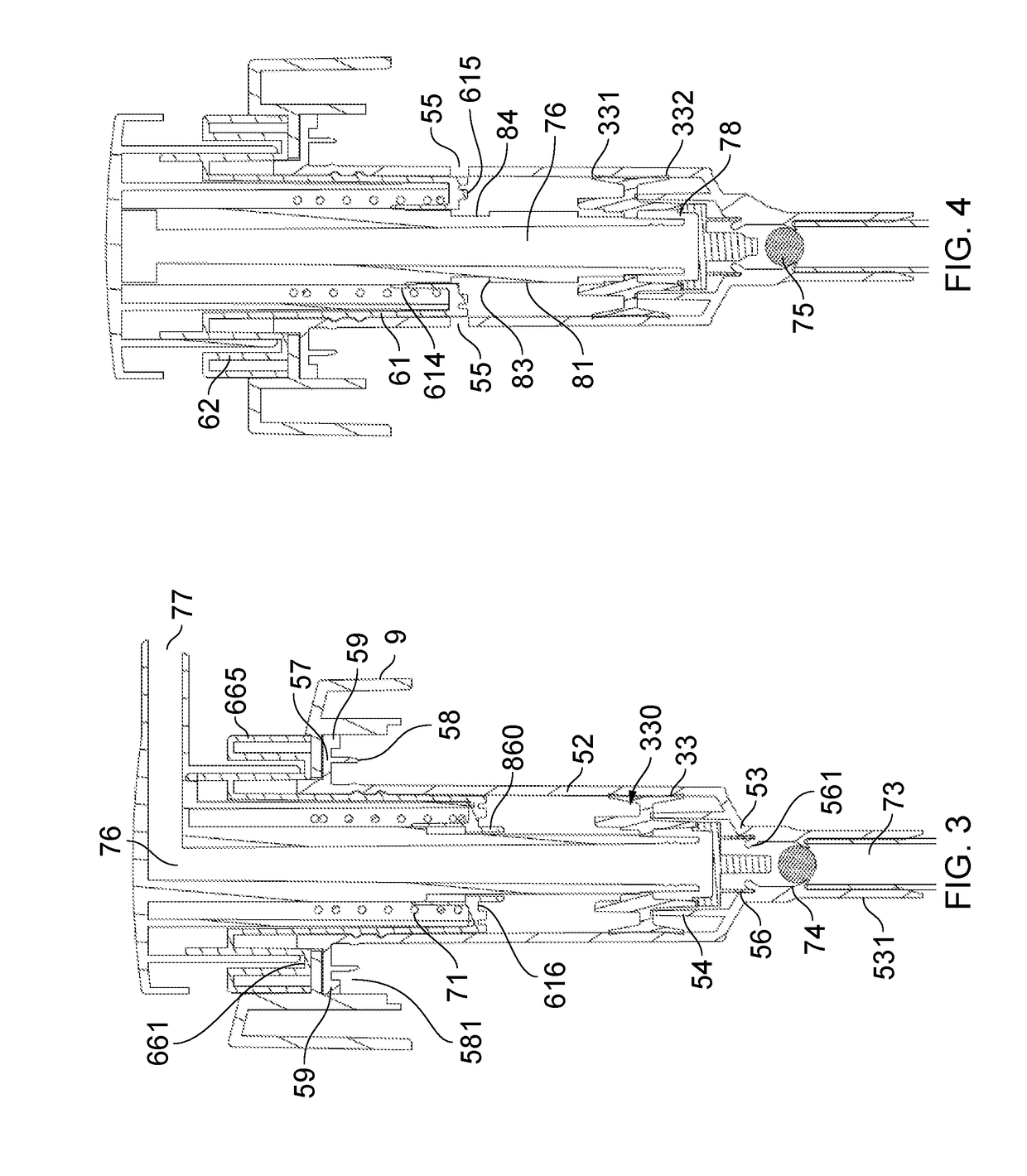Dispensers
- Summary
- Abstract
- Description
- Claims
- Application Information
AI Technical Summary
Benefits of technology
Problems solved by technology
Method used
Image
Examples
second embodiment
[0110]The bottom of the stem 32 is partly closed off by the end piece 34 (see FIG. 11). The end piece has a set of spaced clip legs 341 engaging the snap ribs inside the stem socket 323, a disc-shaped closure body 346 spaced slightly out from the stem end, and an upward seal ring 342. The underside of the closure body 346 carries a central nose 344 surrounded by a downward sealing skirt 345 which, in the down-position (FIGS. 3, 4), slidingly plugs sealingly into the inlet formation 53 of the cylinder body, around a cylindrical sealing surface 56 thereof, and stopped by inward nib projections 561, blocking communication between the inlet and the pump chamber 79. The piston sleeve 330 has limited travel between upper and lower positions relative to the stem 32. In the upper position (see also FIG. 15 of the second embodiment, where the structures are the same) the inward annulus 336 meets the top slide stop 325 and the bottom seal ring 333 of the sleeve 330 is axially spaced from the ...
third embodiment
[0117]FIGS. 20 to 27 show a third embodiment, in which again the general components correspond to those of the first two embodiments but with the following differences.
[0118]Firstly, the plunger stem is formed with an upper portion—integral with the plunger head as seen in FIG. 24—and a separate lower stem portion which snaps onto the upper stem portion. The lower stem portion carries the opposed pair of uplock / downlock rectangular lands, the top and bottom surfaces of which provide the down-locked and up-locked positions shown in FIGS. 22 and 23, by engagement with the inward projections on the insert component (FIG. 27). As before, the insert component lockdown formations include tracks for passage of the lands on the plunger stem, and stop formations, which are engaged by the ribs seen on the sides of the upper stem portion (FIG. 24). By providing the uplock / downlock formations on a separate stem piece, moulding of the stem and head components is simplified. The lower stem portio...
fourth embodiment
[0129]The fourth embodiment shows a different rotational lock formation for the underside of the closure part of the cylinder body and to engage the container neck (not shown). The formation shown has a set of eight downward projections, outwardly spaced from the inner sealing skirt as before. This is the feature disclosed in our GB1608596.1 filed on 16 May 2016, the disclosure of which is incorporated herein by reference. It is designed to cooperate with a container neck having an upward plug sealing skirt as before, and a pair of two opposed outward projections immediately below the skirt, to engage the body flange lugs shown. In addition to the usual thread, the container neck has directional pawls below the thread to engage flexible directional lugs which project in around the bottom periphery of the outer securing cap (see FIGS. 28 and 29) resulting in a very secure, tamper-resistant closure that will resist considerable agitation and impact e.g. during shipping, without damage...
PUM
 Login to View More
Login to View More Abstract
Description
Claims
Application Information
 Login to View More
Login to View More - R&D
- Intellectual Property
- Life Sciences
- Materials
- Tech Scout
- Unparalleled Data Quality
- Higher Quality Content
- 60% Fewer Hallucinations
Browse by: Latest US Patents, China's latest patents, Technical Efficacy Thesaurus, Application Domain, Technology Topic, Popular Technical Reports.
© 2025 PatSnap. All rights reserved.Legal|Privacy policy|Modern Slavery Act Transparency Statement|Sitemap|About US| Contact US: help@patsnap.com



